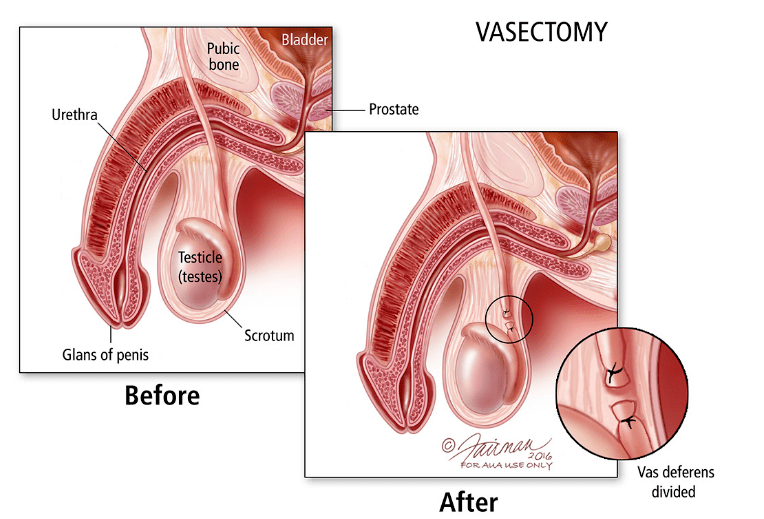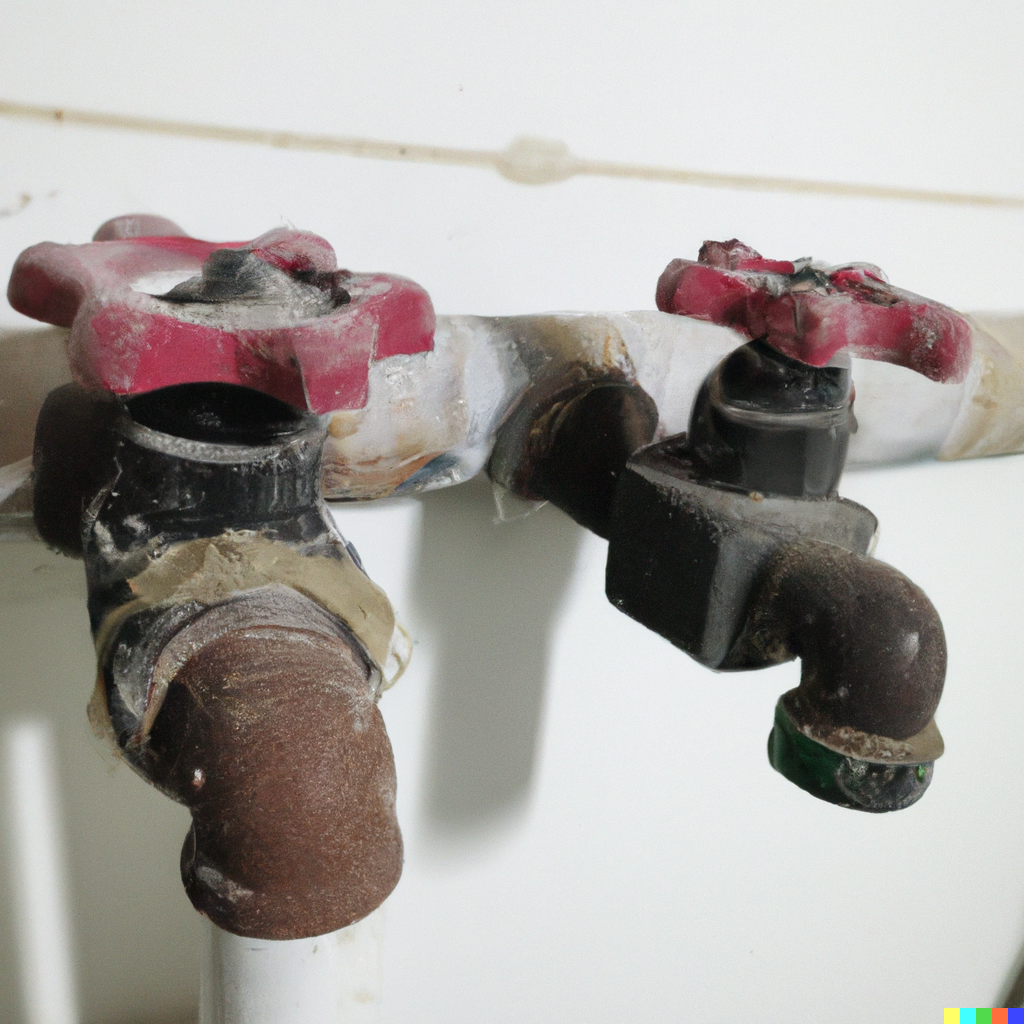A vasectomy is a surgical procedure for male permanent contraception. It involves cutting or blocking the vas deferens, the tubes that carry sperm from the testicles to the urethra. The procedure results in the inability of sperm to reach the semen that is ejaculated from the penis, thus rendering a man sterile.

From urologyhealth.org
There are two main techniques for performing a vasectomy: conventional (incision) and no-scalpel (keyhole). The no-scalpel technique involves making a small puncture in the scrotum rather than a surgical incision, reducing the risk of complications and speeding up recovery time.
The procedure is typically performed in a doctor's office or clinic and takes approximately 15-30 minutes. Local anesthesia is usually used to numb the area, and the procedure is usually done on an outpatient basis.
Recovery from a vasectomy is usually quick, with most men able to return to work and normal activities within a few days. It is important to use other forms of birth control until semen analysis confirms that the vasectomy has been successful.
It is important to consider the permanent nature of a vasectomy and to carefully weigh the risks and benefits with a healthcare provider before deciding to undergo the procedure. Although vasectomy is a very effective form of birth control, there is a small chance of failure and other methods of contraception should be used in conjunction with the procedure until semen analysis confirms sterility.
A vasectomy is a convenient, low-risk, and highly effective form of male contraception. However, it should only be considered after careful consideration and discussion with a healthcare provider. It is considered permanent, though it can be attempted to be reversed success rates of reversal are not guaranteed. For this reason, patients do have the option of cryopreserving, or freezing, sperm to eliminate the doubt that they made the wrong decision. There are yearly fees associated with cryopreservation. For more information on sperm cryopreservation and costs, please follow the following links: https://www.cryosinternational.com/en-us/us-shop/client/services/fertility-preservation-for-men/
https://www.meetfellow.com/kit-plus-cryo?gclid=Cj0KCQiAo-yfBhD_ARIsANr56g7hPba5NE27PTzLzIbUiBoXRkmYRkiDJ-Y5eTi0YXCo4AAfJyDASoUaArDhEALw_wcB
More specifically, a No Scalpel Vasectomy is a minimally invasive, safe and effective method of permanent contraception for men. It is performed as an outpatient procedure, under local anesthesia and takes only about 15-30 minutes to complete.
Benefits:
-
Fast recovery time
-
Minimal discomfort during and after procedure
-
High success rate with a low risk of complications
-
Reversible if needed (although success rates are lower)
Possible Complications:
-
Hematoma (bleeding within the scrotum)
-
Infection
-
Sperm granuloma (a small, usually painless lump near the vasectomy site)
-
Pain or discomfort
It is important to note that no method of birth control is 100% effective, and other forms of contraception should be used until semen analysis confirms that the vasectomy has been successful. This is usually 2-3 months after the procedure, though this can vary.
Overall, no scalpel vasectomy is a convenient and efficient option for permanent contraception that minimizes discomfort and risks, making it an attractive option for prospective patients.
Dr. Patel has performed thousands of vasectomies over the course of his career and performs single site no-scalpel vasectomy.








